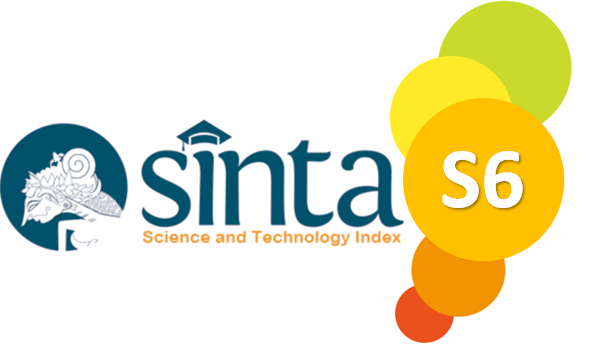Author Guidelines
Rules of Writing Articles in DIALEKTIKA KOMUNIKA: Jurnal Kajian Komunikasi dan Pembangunan Daerah
- The submission has not been previously published in full text or part of it.
- The submission is original, neither a compilation nor a translation.
- Custom to writing the complete article, you can refer to the template that you can download here.
- For the manuscript in Bahasa Indonesia, please use Ejaan Yang Disempurnakan 5th edition as can be accessed here.
- Empirical research-based manuscripts use formats: Introduction, Method, Results and Discussion, and Conclusions.
- Title of Articles: Formulated with clear and concise, written in Bahasa Indonesia by using Book Antiqua font, size 14 pts, bold, 1 spacing, left margin, uppercase and less than 15 words. Name the author of all without a title, written with Book Antiqua font, size 11 pts, bold, left margin. The name of the second row in the order agency or institution(s) authors, written with Book Antiqua font, size 11 pts, left margin. Author email address in the third row. If there is a second and subsequent writers, writing together with the identity of the first author.
- Abstract: Maximum length of abstract is 150-200 words, written in English and Bahasa Indonesia by using Book Antiqua font, size 11 pts, 1 spacing. Leave one blank line between title-author heading and abstract text. Begin the first word at the extreme left. Type the entire abstract as single paragraph. The contents are objective research, method, population sample and result. Leave one blank line, then begin the line with the word Keywords (no more than five keywords in lowercase).
- Introduction: Introduction need to be given a title Pendahuluan, written immediately after the keywords, with Book Antiqua, size 11 pts, spacing 1,15 on A4 paper, with left margin 1,75 cm, right 1,5 cm, top 2,3 cm and below 2,3 cm. Introduction contains the background issues that are supported by the concepts, theories and research results from literature sources of relevant and up to date. At the end of the preliminary mentioned writing articles or research purpose clearly.
- Method: Method contains the objective, type of approach, and type of the method is used, the data describing the qualitative and/or quantitative, instrument data collection, and analysis procedures.
- Results and Discussion: Results contains the answers to the problems of research in quantitative and/or qualitative in a clear, precise and complete that can use the information in the form of pictures/graphs/tables/actual description. The discussion provides some arguments of the research results, related to the concept or theory and other relevant research results, interpretation of the findings, limitations of the study, and their implications for development or scientific concepts.
- Conclusion: Conclusion contains a summary of the answers to the problems the research is a contribution to the development of science.
- References: Bibliography contains references that are used only in the writing of this article. For uniformity and Internationalization, writing Bibliography wearing article according to the way of writing citations APA style.
- Footnotes: Try to avoid the use of footnotes.
- Figures, diagrams & tables: Place diagrams, figures, tables and pictures should be centred and in correct location in your text. Each diagram, figure, table and picture are presented in 1 column format and should have a title using the following guide: Figure 1: Title (Book Antiqua, 9 pt). The use grey scale images is preferred. When using labels within a diagram, figure, table and picture please ensure that labels have horizontal orientation.
- The manuscript must be submitted via the OJS system.
- First, the author should register as either an author or reviewer (checking role as author or reviewer) in the Register.
- Once the registration step is complete, log in as an author and click on New Submission. The article submission stage consists of five stages, such as: (1). Start, (2). Upload Submission, (3). Enter Metadata, (4). Upload Supplementary Files, (5). Confirmation.
- In the Start column, check all the checklists, save and continue
- In the Upload Submission, upload the manuscript files in MS. Word format in this column.
- In the Enter Metadata columns, fill in all the author data and affiliations. Include the Article Title, Abstract, and Indexing Keywords.
- In the Upload Supplementary Files columns, the author is allowed to upload supplementary files, the Publication Ethics Statement and Curriculum Vitae (at number 9 above), or any other. Publication Ethics Statement and Curriculum Vitae can be downloaded here.
- In the Confirmation columns, if the data you entered is all correct already, then click Finish Submission.
- If the author has difficulties with the submission process through the online system, please contact the DIALEKTIKA KOMUNIKA: Jurnal Kajian Komunikasi dan Pembangunan Daerah editorial team at [email protected]
- The incoming manuscript will check the similarity using Turnitin with a maximum tolerance of 20%. If the results show more than 20%, the manuscript will be returned to be improved by the author.











